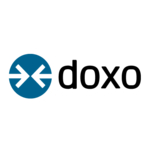Banking is moving to a dual core
In my last post I discussed the separation of manufacturing and distribution in banking and fleetingly mentioned “digital banking platforms” (DBP) aka digital banking engagement platforms as coined by Jost Hoppermann at Forrester.
This has started taking shape in the analyst’s world over the last few years but is a concept that still many banks struggle with. In my experience, smaller banks find it difficult to understand the separation as they rely much more on their core banking vendor, whilst larger banks have typically already separated their customer management and stitched together their own DBP.

I’m not saying that digital transformation is just a case of implementing a DBP.
The simplest definition of a DBP is that it is the platform that manages the customer lifecycle: everything from onboarding customers to managing their product holdings, its focus is on customer management and sales. When banks operated in product silos it was fine to manage customer lifecycles within each product system, but let’s face it, most customers rarely have more than two products per bank. Such banks would typically consolidate customer data into a data warehouse and manage their “single customer view” from there. Typically, this was used to drive offline batch campaigns to target customers for new products.
As customers move online, they are less and less responsive to offline campaigns as they lack relevancy and timeliness. For example, when we receive a flyer for a new credit card in our bank statement we are left wondering why? However, if you received a message in your internet banking saying that your expenses have been steadily increasing and it is likely you face overdraft fees unless you plan ahead, this is seen as advice/helpful. If at that moment you were offered a credit card to allow you to offset some your expenses against your account, this becomes an offer that is timely and relevant. So, real time offers/advice based on a full understanding of the customer is one reason to separate your customer management.
Another reason is to use open banking to get a true full view of your customers money. Most of us typically have products from multiple suppliers. Using open banking makes it possible to aggregate a full view of a customers’ accounts and therefore provide even better advice. To leverage open banking data, banks will need to manage customer consent, aggregate accounts (typically using a third-party API provider like Yapily or Strands) and then store/analyse this additional data. These new components are very much an optional part of a DBP, but increasingly will become staple features.
DBP is still a work in progress, after all the core banking world has evolved many times over the last 40 years. Additional modules deemed to be part of a DBP include entitlements, order processing, product catalogues and as highlighted above, digital engagement. A DBP is a layer above core banking and between delivery channels. It facilitates omnichannel customer journeys and shouldn’t be confused with just being “internet and mobile banking”.
Many banks, especially in the USA, adopt a DBP to overcome some of the limitations in their core banking, for example to facilitate direct debits and standing orders. Implementing a DBP is seen as lower risk and faster than doing a full transformation, so it is no wonder this is a popular approach to digitising banks. For incumbent core banking vendors, a DBP can be seen as a threat as it effectively increases the life of a competitor or a bank’s legacy core banking system. However, some will see it as an opportunity to effectively allow them to sell where it is difficult to replace a competitor.
It would be remiss of me not to mention what the biggest opportunity for a DBP could be outside of the banks! For any organisation that wants to leverage banking data and or be a pure distributor of financial products, a DBP is their new core. I have written extensively about experience driven banking: essentially, they are next generation banking distributors whose main revenue may or may not be from selling financial products. According to analysts, the market opportunity for DBP is already close to that of core banking and will soon overtake it. DBP will have a positive impact to core banking providers that have invested in this space as their market opportunity effectively doubles. For those that haven’t, it will demand a sharper focus on their legacy core banking platform. Borrowing a term from ThoughtMachine, “hollowing out the core” is the shape of things to come in core banking, more on this in my next post.
I’m not saying that digital transformation is just a case of implementing a DBP, it is however key to anyone that wants to manage, keep and drive customer loyalty. I’d go far as saying that DBPs are the new core in banking for any organisation that wants to own profitable end customer relationships. For banks that also want to manufacture products (not just distribute) they will have run a dual core bank: a customer core (DBP) and a product core.
About the author
Dharmesh Mistry has been in banking for 30 years and has been at the forefront of banking technology and innovation. From the very first internet and mobile banking apps to artificial intelligence (AI) and virtual reality (VR).
He has been on both sides of the fence and he’s not afraid to share his opinions.
Follow Dharmesh on Twitter @dharmeshmistry and LinkedIn.










































